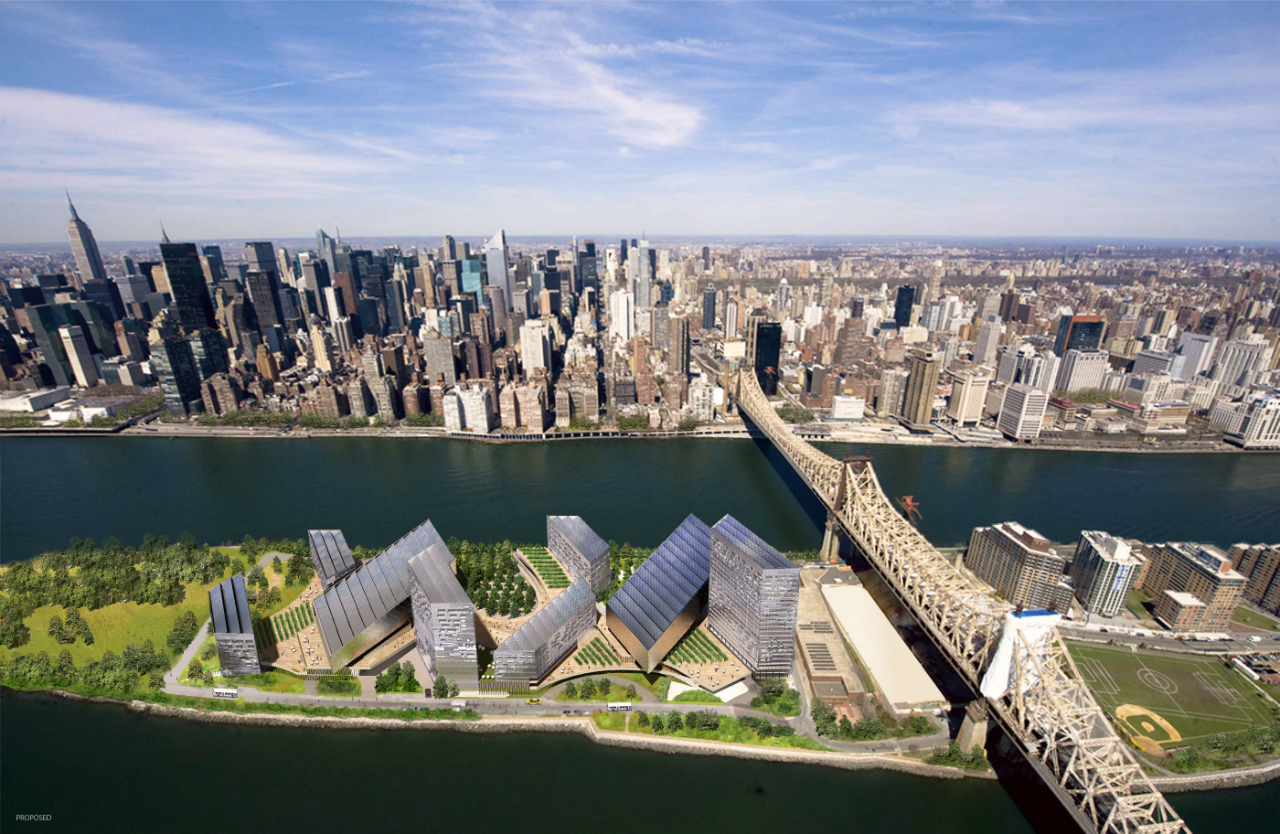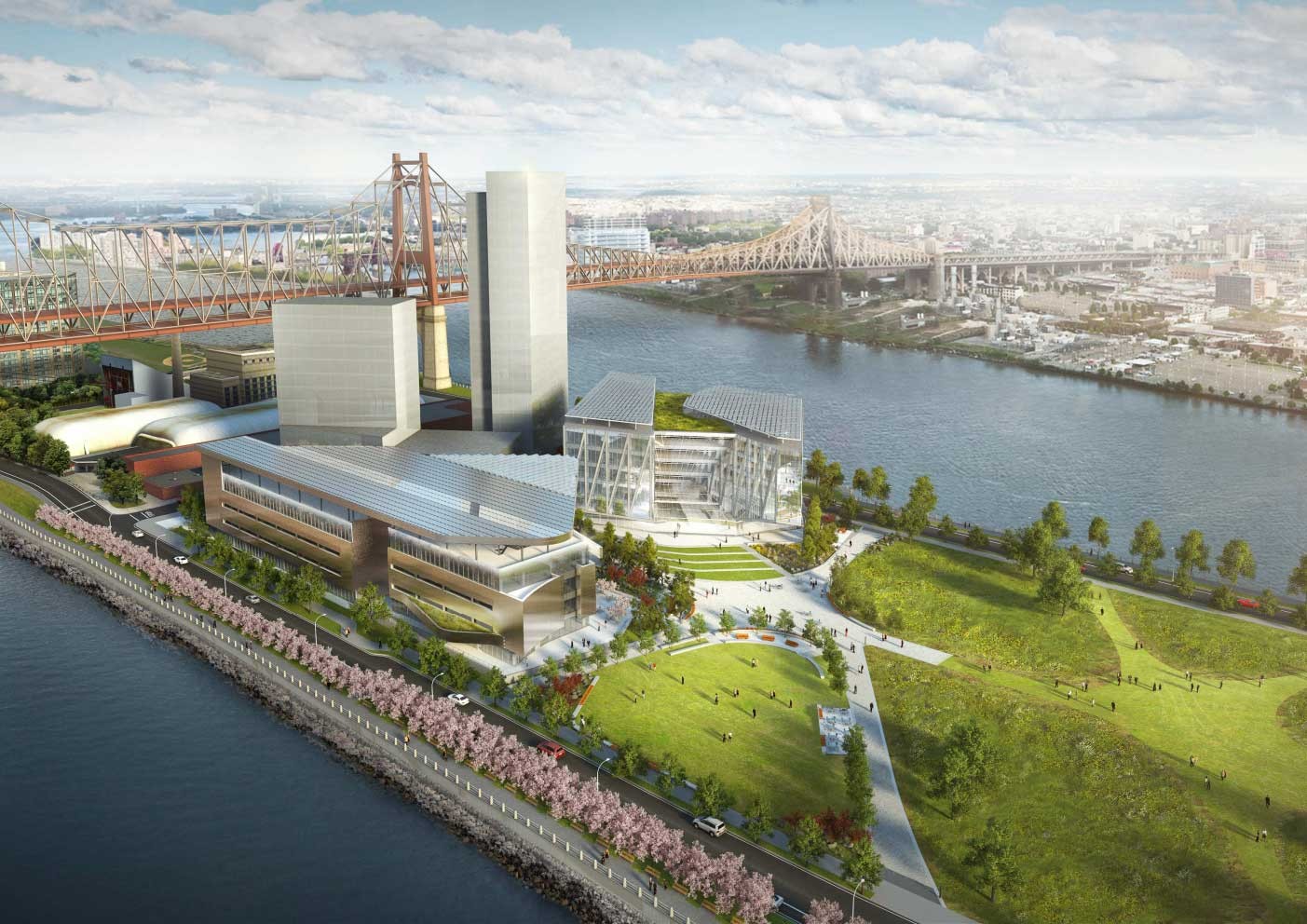Cornells Tech Campus Aims Net Zero - Pioneering Sustainable Innovation
Cornell's Tech Campus, situated on Roosevelt Island in New York City, is a pioneering example of sustainable design and development. One of the primary objectives of Cornells Tech campus aims net zero is to achieve net-zero energy consumption, aiming to produce as much energy as it consumes, thereby minimizing its carbon footprint. This commitment to sustainability extends to various aspects of the campus, including energy generation, energy-efficient design, waste management, and transportation.
Author:George EvansJun 04, 202358K Shares1M Views

Cornell's Tech Campus, situated on Roosevelt Island in New York City, is a pioneering example of sustainable design and development. One of the primary objectives of Cornells Tech campus aims net zerois to achieve net-zero energy consumption, aiming to produce as much energy as it consumes, thereby minimizing its carbon footprint. This commitment to sustainability extends to various aspects of the campus, including energy generation, energy-efficient design, waste management, and transportation.
Cornell Tech Campus Net Zero Energy Initiatives
In this article, we will delve into the strategies and initiatives employed by Cornell's Tech Campus as the Cornells Tech campus aims net zero goal.
Net-Zero Energy Generation
Net-zero energy generation is at the forefront of Cornell's Tech Campus' sustainability efforts. The campus employs a combination of renewable energy sources and cutting-edge technologies to produce as much energy as it consumes, resulting in a minimal carbon footprint.
- Solar Power - Solar panels are a prominent feature of the campus, harnessing the power of the sun to generate clean and renewable energy. Installed on rooftops and facades of buildings, these solar photovoltaic panels convert sunlight into electricity. The campus maximizes solar energy utilization by optimizing panel orientation, tilt, and placement to capture the greatest amount of sunlight throughout the day.
- Geothermal Energy -In addition to solar power, Cornell's Tech Campus taps into the Earth's natural heat through geothermal systems. Geothermal heat pumps utilize the relatively constant temperature underground to provide efficient heating and cooling to the campus buildings. This reduces the reliance on conventional heating and cooling systems, which typically consume significant amounts of energy.
- Combined Heat and Power (CHP) -The campus also employs combined heat and power systems, also known as cogeneration, to optimize energy efficiency. CHP systems generate both electricity and useful heat from a single fuel source. By utilizing the waste heat produced during electricity generation for heating purposes, the campus maximizes the overall energy utilization and minimizes wastage.
Energy-Efficient Design
Energy-efficient design plays a crucial role in achieving net-zero energy goals at Cornell's Tech Campus. The campus incorporates various architectural and engineering principles to minimize energy consumption and optimize resource efficiency.
- Passive Design -The campus leverages passive design strategies to reduce reliance on mechanical systems for heating, cooling, and lighting. Buildings are oriented to maximize natural daylighting, reducing the need for artificial lighting during the day. The strategic placement of windows, shading devices, and insulation helps maintain comfortable indoor temperatures while minimizing energy losses.
- High-Performance Building Envelope - The campus employs advanced insulation materials and techniques, as well as high-performance windows and doors, to create a well-insulated building envelope. This helps prevent heat transfer and minimizes energy losses, resulting in more efficient temperature regulation and reduced energy demand.
- Smart Building Management Systems - Cornell's Tech Campus utilizes sophisticated building management systems to monitor and control energy consumption in real-time. These systems integrate sensors and automation to optimize energy usage by adjusting lighting, temperature, and ventilation based on occupancy and environmental conditions. The campus can identify energy-saving opportunities, track energy usage patterns, and make data-driven decisions to improve energy efficiency continually.
- Efficient HVAC Systems -Heating, ventilation, and air conditioning (HVAC) systems at Cornell's Tech Campus are designed for energy efficiency. High-efficiency HVAC equipment, including variable-speed compressors, energy recovery ventilation, and demand-controlled ventilation, help reduce energy consumption while maintaining indoor comfort levels.
- Renewable Energy Integration -The campus infrastructure is designed to seamlessly integrate renewable energy sources into the grid. Excess energy generated from solar panels and other renewable sources can be fed back into the grid or stored for later use, ensuring a reliable and continuous energy supply.
Through net-zero energy generation and energy-efficient design, Cornell's Tech Campus demonstrates its commitment to sustainability and environmental stewardship. By combining renewable energy sources, innovative technologies, and intelligent design practices, the campus serves as a model for sustainable development, inspiring other institutions and communities to pursue similar goals.
Waste Management And Recycling
Cornell's Tech Campus places a strong emphasis on waste management and recycling to minimize its environmental footprint. The campus implements comprehensive recycling programs to divert waste from landfills and promote responsible waste disposal.
Recycling bins are strategically placed throughout the campus, encouraging individuals to separate recyclable materials from general waste. In addition to traditional recycling, the campus also focuses on composting organic waste generated from food and landscaping activities.
This approach reduces landfill waste and allows organic materials to be repurposed for nutrient-rich soil amendments. By implementing effective waste management practices, the campus demonstrates its commitment to environmental stewardship and resource conservation.
Sustainable Water Management
In addition to energy conservation, Cornell's Tech Campus prioritizes sustainable water management. The campus employs various strategies to minimize water consumption and maximize water efficiency. Rainwater harvesting systems are installed to capture and store rainwater for irrigation and non-potable uses.
This reduces reliance on municipal water supplies and conserves freshwater resources. Additionally, the campus incorporates low-flow fixtures and water-saving technologies throughout its facilities, including low-flow toilets, faucets, and showerheads.
These measures promote water conservation without compromising user comfort or convenience. By implementing sustainable water management practices, the campus minimizes its impact on local water resources and contributes to a more resilient and water-efficient future.
Sustainable Transportation
Cornell's Tech Campus recognizes the significance of sustainable transportation in reducing carbon emissions and promoting environmentally friendly commuting options. The campus encourages alternative modes of transportation to minimize the reliance on individual vehicles.
- Public Transit Access - The campus is conveniently located with access to public transit, including bus and subway lines. This encourages students, faculty, and staff to use public transportation, reducing the number of cars on the road and associated greenhouse gas emissions.
- Biking Infrastructure - The campus provides dedicated cycling lanes, bike-sharing programs, and ample bike parking facilities to support active transportation. By promoting cycling as a viable commuting option, the campus reduces traffic congestion and improves air quality.
- Electric Vehicle Charging Stations - To further encourage sustainable transportation, the campus installs electric vehicle charging stations. These stations enable electric vehicle owners to conveniently charge their vehicles, promoting the adoption of electric transportation and reducing reliance on fossil fuels.
- Walking-Friendly Environment -Cornell's Tech Campus prioritizes walkability by designing pedestrian-friendly pathways, sidewalks, and green spaces. This encourages individuals to walk between buildings and amenities, promoting physical activity, and reducing short-distance car trips.
By integrating sustainable transportation options, the campus strives to create a vibrant and environmentally conscious community.
People Also Ask
What Is Cornell's Tech Campus?
Cornell's Tech Campus is a sustainable campus located on Roosevelt Island in New York City, known for its commitment to achieving net-zero energy consumption and pioneering sustainable design and development.
How Does Cornell's Tech Campus Aim For Net-zero Energy?
Cornell's Tech Campus utilizes a combination of renewable energy sources such as solar power and geothermal energy, along with energy-efficient design and advanced technologies to generate as much energy as it consumes, aiming for net-zero energy consumption.
What Are Some Sustainable Features Of Cornell's Tech Campus?
The campus incorporates sustainable features such as solar panels for renewable energy generation, energy-efficient building design to optimize natural lighting and reduce energy consumption, waste management and recycling programs, sustainable water management practices, and promoting sustainable transportation options.
What Is Net-zero Energy Consumption?
Net-zero energy consumption refers to the concept of a building or campus generating as much energy as it consumes over a specified period. It involves reducing energy demand through energy-efficient measures and utilizing renewable energy sources to meet the remaining energy needs.
How Does Cornell's Tech Campus Promote Sustainable Transportation?
Cornell's Tech Campus encourages sustainable transportation by providing access to public transit, including bus and subway lines. The campus also promotes cycling through dedicated cycling lanes, bike-sharing programs, and ample bike parking facilities. Additionally, electric vehicle charging stations are available, and the campus is designed to be pedestrian-friendly, encouraging walking as a sustainable commuting option.
Conclusion
Cornell's Tech Campus on Roosevelt Island serves as a shining example of sustainable design and development as Cornells Tech campus aims net zero.
Through innovative strategies such as net-zero energy generation, energy-efficient design, waste management and recycling, sustainable water management, and sustainable transportation initiatives, the campus demonstrates its commitment to environmental stewardship and creating a sustainable future.
By pioneering these practices, Cornell's Tech Campus sets a high standard for other institutions and communities to follow in their pursuit of sustainability and carbon neutrality.

George Evans
Author
George Anderson, an exceptional architectural designer, envisions and brings to life structures that transcend the realm of imagination. With an unwavering passion for design and an innate eye for detail, George seamlessly blends form and function, creating immersive spaces that inspire awe.
Driven by a deep appreciation for the interplay of space, light, and materials, George's innovative approach redefines the possibilities of architectural design. His visionary compositions leave an indelible mark, evoking a sense of wonder and transforming the built environment.
George Anderson's transformative designs and unwavering dedication continue to shape the architectural landscape, pushing the boundaries of what is possible and inspiring generations to come.
Latest Articles
Popular Articles
